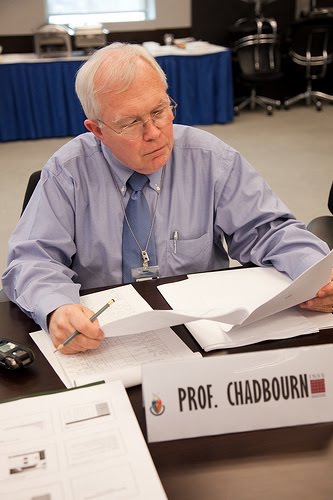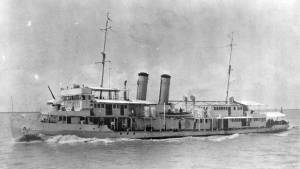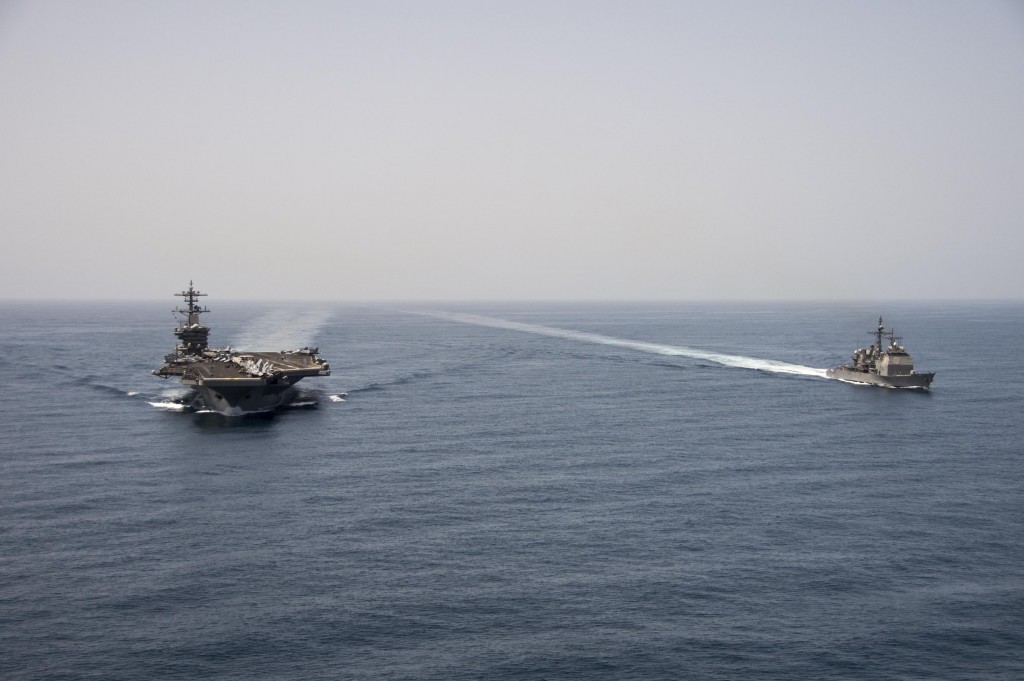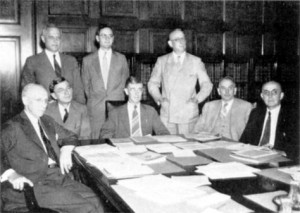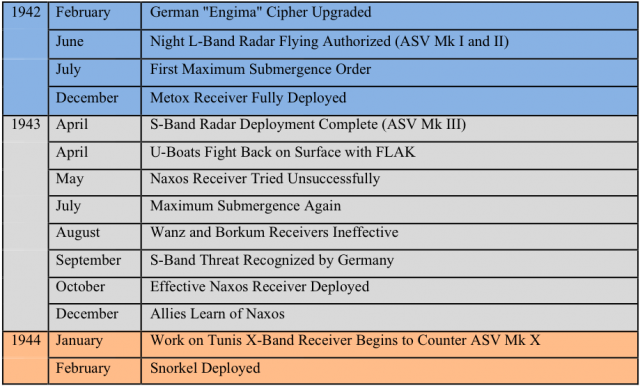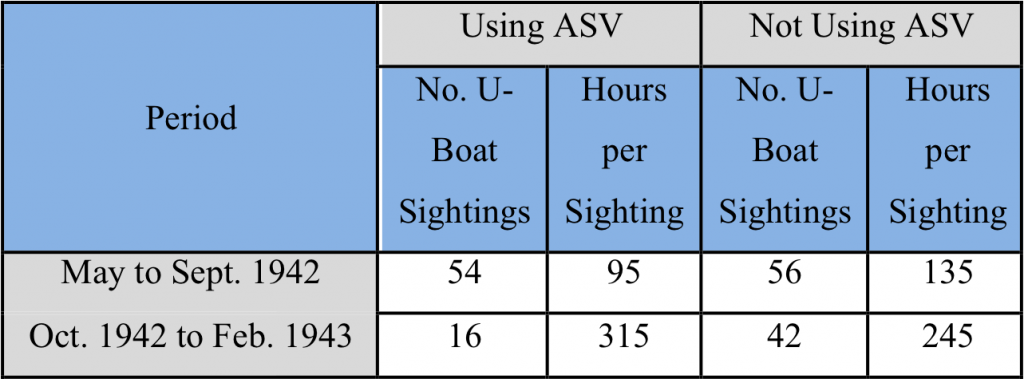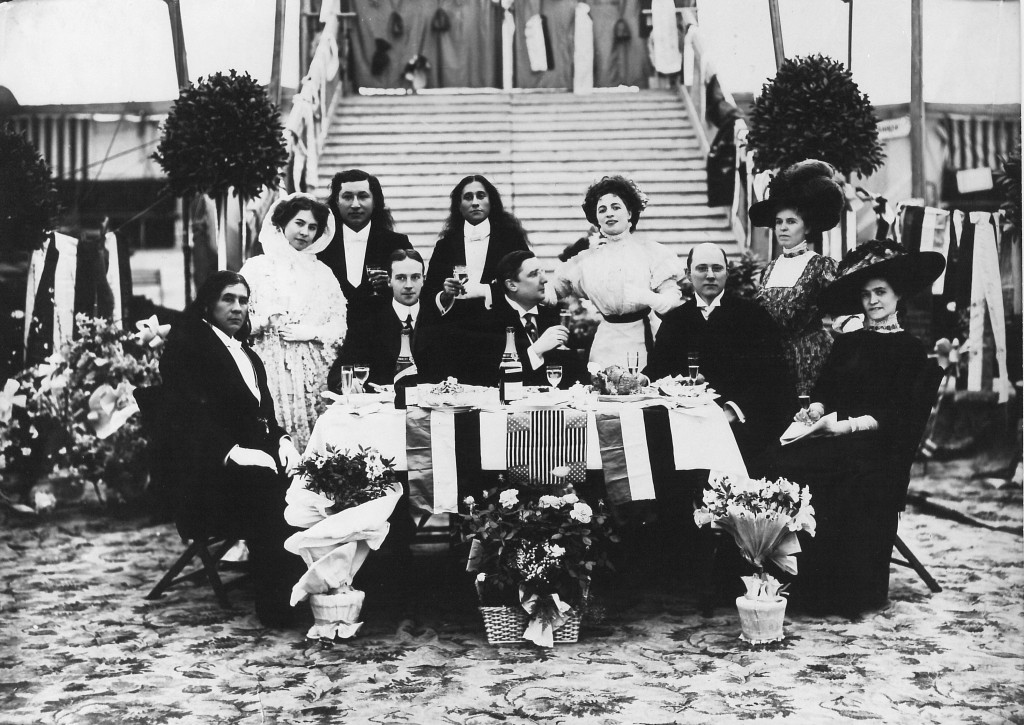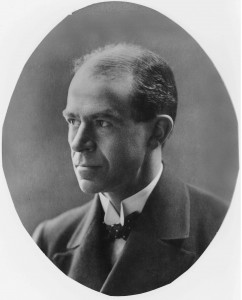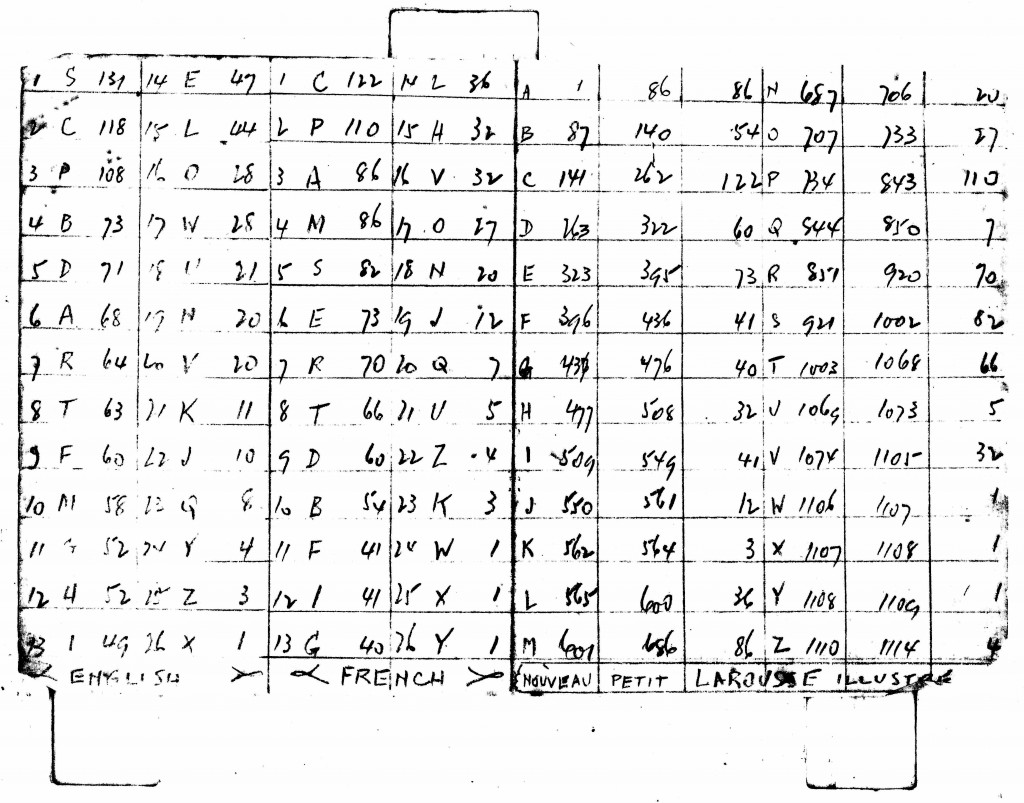Contents:
“Little More than an Armored Target”
The Strategical Awakening
Early Developments in U.S. Naval Intelligence
The Establishment of ONI
ONI’s Strategical Mission
Conclusions
Scott Mobley
University of Wisconsin—Madison
“Little More than an Armored Target”
Standing on a bridge wing of the guided missile destroyer USS Richard E. Byrd, a peculiar sight caught my eye. As the ship glided quietly into harbor of Talcahuano, Chile one overcast spring morning in 1989, I noticed the sailing masts, tubular smokestack, and squat gun turret of an antique warship. The diminutive vessel’s jet black hull and gleaming white superstructure contrasted sharply with the modern haze-gray hulls towering nearby. Curious, I queried our Chilean liaison officer about this odd relic. “It’s the Huáscar,” he replied, “we captured it long ago in a war with Peru. Now it’s a museum.” Sure enough; visitors today can tour Huáscar at Talcahuano, where the Chilean Navy faithfully preserves it as a memorial to the brave seamen of both Chile and Peru.
My inquiry was not the first interest in Huáscar expressed by a U.S. naval officer—Lieutenant Theodorus B.M. Mason preceded me by more than a century. In October, 1879, Mason and a contingent of American officers eagerly clambered over the badly mauled, 196-foot vessel in search of valuable technical intelligence. Having captured Huáscar off Cape Angamos just days before, the Chileans jubilantly displayed their prize and freely shared information about the battle. As the first-ever clash involving modern ironclads on the high seas, the Angamos action held tremendous historical, professional, and technical significance—qualities fully appreciated by Mason and his comrades. Indeed, Mason assessed the battle as “one of the most important in modern naval warfare.” No doubt he marveled at the wonderful opportunity to gather substantial information on such a seminal event first-hand, and within a mere fortnight of its occurrence.
Rear Admiral Christopher R.P. Rodgers, commander of the U.S. Pacific Squadron, appointed the Huáscar inspection team on October 14, 1879. Placing Captain Kidder R. Breese in charge, Rodgers instructed the inspectors to report on the ironclad’s technical details and the nature of damage received in the recent fight. Carefully following the admiral’s instructions, Breese’s team combed the shattered Huáscar, examining, measuring, sketching, and recording the details of its design and condition. They discovered twenty-four hits in the warship’s hull, battery, and superstructure—mostly nine-inch armor-piercing shells fired at close range from Chilean armored cruisers. The Americans found Huáscar’s armored pilothouse punctured by three shells, a deadly barrage that killed all within, including Huáscar’s commanding officer. Other shots struck the ship’s primary battery, a pair of ten-inch rifled guns mounted together in a single armored turret. After initially jamming the turret’s rotation mechanism, Chilean shells penetrated the turret’s 5.5-inch armor, wiping out both gun crews. Two other shots disabled the ship’s steering mechanism. In short, Huáscar was a wreck. “The Chilians’ [sic] fire must have been extremely accurate,” Mason later reported, “as the ‘Huascar’ was reduced during the latter part of the fight to little more than an armored target.” Yet the Americans marveled how the former Peruvian ironclad remained afloat after the battle and even made port under her own power, a testimony to the virtues of modern British warship construction.
Breese submitted a formal report to Rodgers on October 20, who dutifully forwarded it to Navy Secretary Robert W. Thompson. In his endorsement, the admiral noted that the report offered a “a careful and technical description.” He emphasized to Thompson that “the Navy Department and all naval officers would take much interest,” suggesting that the information on Huáscar should be circulated promptly and widely throughout the service.
* * * * *
The Navy Department had no established protocol for disseminating intelligence, neither within its headquarters at Washington, D.C. nor to naval units dispersed worldwide. For that matter, the navy’s practices for gathering intelligence lacked focus and coherence. Much depended on individual commanders, acting under a general mandate to report any useful information they might encounter. Some enterprising officers like Rodgers demonstrated extra initiative, organizing intelligence cells within their commands. Indeed, the Huáscar team represented one component of a larger project launched by Rodgers to monitor and report systematically on the War of the Pacific. From time to time navy bureau chiefs or the secretary requested overseas commanders to collect intelligence on a particular subject or question. Occasionally the department dispatched intelligence missions abroad to accomplish focused studies. However, bureaucratic compartmentalization and ad hoc, uncoordinated efforts typified U.S. Navy intelligence endeavors through the early 1880s. Similarly, the analysis of pertinent information to answer specific strategic or technical questions often depended on individual initiative from officers like Mason.
The disorganized nature of naval intelligence fairly assured that useful information on the South American war would not reach its intended audience through official channels as quickly as Rodgers desired. Secretary Thompson simply appended the Huáscar report to his annual report in December 1879, which the Government Printing Office published a few months later. Meanwhile, information gathered by Rodgers’s intelligence cell trickled onto the pages of various unofficial publications, including the Naval Institute Proceedings, the Army and Navy Journal, and the United Service magazine. A thorough analysis by Mason of Huáscar and the Angamos fight finally appeared in the United Service fully one year after he visited the battered vessel.
Thompson’s successor William H. Hunt established the Office of Naval Intelligence (ONI) in 1882. Hunt believed the navy’s disordered intelligence practices lacked a capacity to manage the vast amounts of technical specifications, empirical data, and qualitative information needed to design and build a new fleet of modern steel warships. Thus he conceived ONI as a clearinghouse for technical intelligence. The new agency set up an attaché network to gather information on the technology, facilities, personnel, and practices of foreign navies and other maritime institutions. ONI made previously-compartmentalized information accessible across the Navy Department (and beyond) by setting up an archive and catalog system. To reach a wide audience of intelligence consumers, the office compiled and published much of the information it collected in a series of official technical publications.
The Office of Naval Intelligence quickly became the navy’s central agency for collecting, recording, and disseminating intelligence. The first such institution in the United States, ONI soon established its reputation as a wellspring of technical information. Less well known is the agency’s vibrant role as a center of strategic analysis and planning. During the 1880s, ONI became a site where navy specialists translated into action a new strategical awareness awakened during the previous decade. Under ONI’s aegis, a cadre of bright young officers began to study strategic questions earnestly and systematically as part of their official duties. They also initiated the nation’s first, tentative attempts at peacetime strategic planning. The abundance of strategic studies, war college lectures, and contingency plans produced by ONI staff officers during this period suggest a pioneering strategic role largely unrecognized by previous scholarship.
Much of the existing historical scholarship offers little insight into ONI’s early strategic role. Two institutional histories examine the agency’s first decade, yet both leave unexamined its connection to early strategic developments within the U.S. Navy. While providing an excellent overall treatment of the fledgling ONI, Jeffery M. Dowart’s The Office of Naval Intelligence relates few of its strategic contributions. Instead Dorwart emphasizes ONI’s technical and public affairs roles, concluding that “direct help from the intelligence office figured in every one of the first steel warships.” The second work, A Century of U.S. Naval Intelligence by Wyman H. Packard, acknowledges how ONI assumed a strategic planning mission in 1885. However, Packard limits his analysis to a single statement that ONI’s new strategy-making role made sense, given that the office already “had the responsibility for gathering the information needed for such planning.” In their history of the Naval War College, Hattendorf, Wadleigh, and Simpson report how early ONI staffers, “distracted by broader war problems, higher strategy, and naval history,” drew the ire of navy department technocrats, but the authors do not expand upon this observation.
Most historical monographs on the Gilded Age navy regard the Naval War College (established in 1884) as the essential launching point for earnest strategic development in the United States. At the same time, these narratives rarely, if ever, highlight ONI as a strategical institution. Harold and Margaret Sprout exemplify this interpretation. In their view, only glimmers of strategical consciousness existed prior to the Naval War College program and Alfred Thayer Mahan’s scholarship. Similarly, Walter Herrick describes the 1870s and 1880s as decades of strategic “drift.” Herrick argues that the navy found its strategic compass only after 1889, as Mahan’s ideas gained currency. John A.S. Grenville and George B. Young offer a similar interpretation, while giving principal credit to Stephen B. Luce rather than Mahan for the intellectual and institutional development of strategy. Significantly, neither the Sprouts nor Grenville and Young mention ONI in their works. Herrick describes the office simply as a conduit for “the gathering and evaluation of strategic information from all quarters of the globe,” ignoring its role as a site for producing new strategic knowledge and plans.
Other scholars chart the intellectual development of strategy from the 1870s, some fifteen years before Mahan produced his seminal works on the subject. Yet ONI receives scant mention in these interpretations, despite the proliferation of strategic activity at the agency before 1890. In an influential article on the strategy debates of the 1880s, distinguished naval historian Robert Seager II interprets the currents of strategic thought percolating among navy professionals, legislators, and concerned citizens. While Seager discusses the nascent Naval War College’s significance in these debates, he neglects to address the impact of ONI’s strategical activity during the same period. In another important article centered on the U.S. debates over maritime strategy before 1884, Benjamin L. Apt credits ONI simply with “diligently gathering information on the latest technological developments abroad.”
Technological developments inform other studies—Kenneth Hagan and Robert M. Angevine link ONI’s birth and functioning to technological transformations, rather than the navy’s changing attitudes regarding strategy. Other scholars provide comprehensive syntheses of strategy, technology, and naval transformation during the 1880s, but they do not address the corresponding synergies of strategy and intelligence work. Lawrence Allin provides useful insight into the transformational forces that shaped U.S. naval strategy and intelligence, but his research centers on the role of the U.S. Naval Institute, not ONI. Mark Shulman considers the evolution of both strategy and intelligence, but argues narrowly that the navy reduced ONI to a public relations tool after 1890. Finally, Peter Karsten makes only passing reference to ONI’s early strategic activities in his seminal work on naval culture, The Naval Aristocracy. “The O.N.I.’s many publications,” Karsten summarizes, “served as media through which activist naval strategy found expression.”
Karsten’s observation warrants further investigation. His suggestion of a strategic role for ONI seems to challenge scholars who overlook or underestimate ONI’s early contributions as a strategical institution. A desire to address more deeply this historiographical question thus drove the research for this chapter.
The evolution of U.S. naval intelligence and strategy emerge from the historical record as distinct but interconnected lines of development. As naval intellectuals awakened to new strategic possibilities during the 1870s, the tempo of U.S. naval intelligence activities also quickened. These dual paths converged in 1882, with the establishment of the Office of Naval Intelligence. Although ONI began life as an institution devoted to Mechanism—the gathering and processing of technical information—it quickly became a center for Strategic study and planning. The interests and abilities of the office’s early leaders, staff, and field officers help explain this development. Several were prominent in the navy’s strategical awakening, most notably Washington I. Chambers and T.B.M. Mason. In addition, John G. Walker, Raymond P. Rodgers, John B. Bernadou, Charles C. Rodgers, and Carlos G. Calkins and others demonstrated notable strategical acumen after they affiliated with ONI. In addition, a trio of capable and progressive navy secretaries encouraged ONI’s strategical mission: William H. Hunt, William E. Chandler, and William C. Whitney.
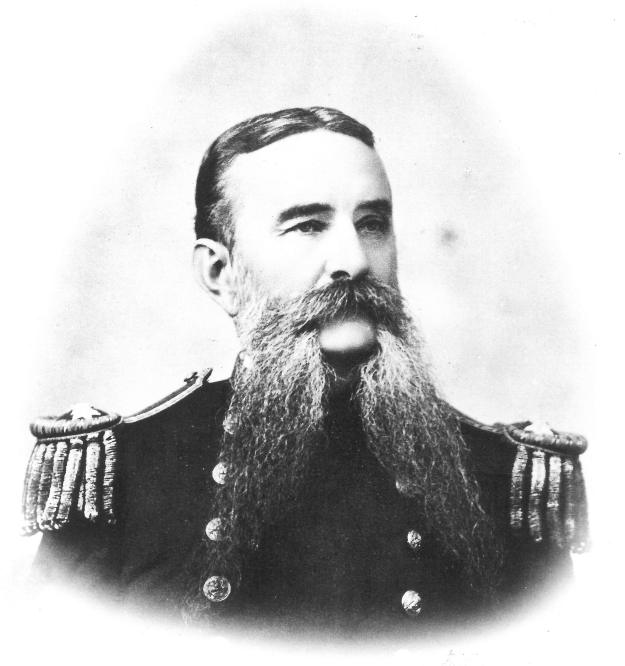
Rear Admiral John Grimes Walker (The Progressive Manager). Walker learning progressive management practices while working in the railroad industry during leaves of absence from the navy. He earned a reputation for innovation as chief of the Bureau of Navigation (1881-1889), shepherding the nascent Office of Naval Intelligence. (Photo courtesy USNI Blog)
This paper also explores how progressive managerial practices guided the actions of Mason, Walker, Rodgers, and other key actors. These men applied concepts such as the use of experts, efficient process and procedures, function-based organization, rational inquiry, and scientific method to address both strategic and intelligence-related problems. Their activities align with the pattern of progressive bureaucratic development outlined by Robert H. Wiebe in his seminal
The Search for Order, and amplified in later works by Alfred R. Chandler and Samuel P. Hays.
In their general approach, ONI’s incipient strategists anticipated social historian Camilla Stivers’s “Bureau Men,” who rose to prominence as municipal reformers after 1900. Both naval strategists and municipal researchers shared a commitment to objective fact-finding as a basis for progressive problem-solving. However, where strategists collected information through intelligence activities, the bureau men utilized public surveys. Yet each group faced a distinctive problem set. Armed with accurate and reliable information, both tailored approaches to meet their particular objectives: the bureau men sought to affect social change by improving city governance, while the strategists applied military means to accomplish the international political goals specified by civil command authority.
The separate evolution and ultimate convergence of Gilded Age naval strategy and naval intelligence structures this chapter. The first section, entitled “Early Developments in U.S. Naval Intelligence,” parallels the Strategical Awakening narrative of Chapter Three. A section follows on “The Establishment of ONI,” weaving the historical threads that delineated the agency’s founding as a clearinghouse for technical information. The final section of the chapter, “ONI’s Strategic Mission,” argues that ONI played a vital yet overlooked role in pioneering the U.S. Navy’s strategical development.
The Strategical Awakening
For the first century of its existence, the U.S. Navy approached strategy as a wartime improvisation—an activity practiced on the fly during times of actual conflict. When the guns fell silent, naval leaders typically reverted to what Mahan described as a “strategic apathy.” Confident that America’s size, wealth, distance, and nonaligned foreign policy assured its security, navy professionals eschewed strategic studies and contingency planning during peacetime. Instead, they focused on missions that promoted and protected the nation’s overseas trade networks. Seamanship, diplomacy, and basic gunnery framed their professional identity far more than strategy and other advanced warfare skills.
The navy’s Civil War experience illustrates the traditional approach, when an ad hoc “Blockade Board” provided a modicum of strategic planning. Hastily constituted in June 1861, the board hammered out a viable joint strategy for the U.S. Navy’s coastal campaign within a matter of weeks. Apparently seeing no further imperative for an organization to guide war strategy, Secretary Welles disbanded the board after only three months of activity. Thereafter, Assistant Navy Secretary Gustavus Fox (a retired naval officer) coordinated with squadron commanders to orchestrate naval operations. However, after Appomattox the navy quickly resumed its routine commercial and constabulary duties abroad; operations chief Fox returned to private life in 1866.
Although the navy dissolved its strategy-making apparatus soon after the Civil War, memories of wartime experiences helped to foster a strategical awakening among navy intellectuals during the 1870s. Departing from the tradition of peacetime strategic apathy, these officers discovered value in the study, discussion, and application of naval strategy and related warfare topics. Commodore Foxhall A. Parker, Jr. and Captain Stephen B. Luce led the strategic initiative, which attracted a coterie of enthusiastic young officers, including: Frederick Collins, Charles Belknap, Robert M.G. Brown, Edward W. Very, Washington Irving Chambers, Charles C. Rogers, William Bainbridge-Hoff, and Theodorus B.M. Mason, among others.
The emerging strategic cadre questioned the U.S. Navy’s capacity to defend the nation as modernization and globalization transformed the international security environment. New capabilities springing from an ongoing revolution in naval technology—reliable steam propulsion, iron and steel hulls, fast armored warships, and powerful new weaponry—seemed poised to eclipse a navy that still relied on wood, sail, and smoothbore muzzle-loading cannon. Perceptions of the U.S. Navy’s material decline—allegedly the result of postwar retrenchment policies and Navy Department mismanagement—added urgency to their concerns. “Our cruising ships, with one or two exceptions, are chiefly noticeable for their uniformity in the matter of obsoleteness,” warned one naval critic, “in a battle with any other ships they would be like crippled stags pitted against tigers in an arena.” , “Uniformity in the Navy,” United Service 5, no. 2 (August 1881): 144.] Furthermore, political developments at home and abroad suggested to these officers that the nation would soon face a greater risk of war than in the past. They postulated that America’s increasingly active role in the world—especially in the Western Hemisphere and Pacific Basin—might collide with the imperial ambitions of other powers. The French project to build a Panama Canal, British and German activities in Samoa, and Japanese interest in Hawaii simmered as potential points of contention.
Awakened to the assessments of mounting international risk, the naval intellectuals admonished their fellow officers to develop strategical expertise. New professional forums such as the Naval Institute Proceedings (founded in 1873) and United Service, (first published in 1879) helped to disseminate their message to a wider audience. Calls to establish institutions devoted to strategic activities, develop a body of coherent strategic theory, study strategic problems facing the United States, and devise viable contingency plans accentuated their agenda. Luce approached the Secretary of the Navy with a proposal for a naval war college in 1877. Three years later, Charles Belknap advocated establishing a strategic advisory board to develop “plans for naval campaigns, both offensive and defensive.” Belknap also recommended that the navy organize a new system to gather and manage “early and trustworthy information in regard to all matters going on of interest to the naval service,” specifying strategic and technical intelligence as top priorities.
Luce and Belknap achieved little headway during the early 1880s. Within a professional service culture biased against strategic theory and practice their proposals attracted scant interest. However, they continued to foster professional dialogue, press for change, and remain vigilant for future opportunities to realize their vision.
Early Developments in U.S. Naval Intelligence
Along with Belknap, Theodorus Mason was an early advocate for systematizing and consolidating naval intelligence work. During his tenure as secretary of the U.S. Naval Institute, the progressive-minded young officer advanced a quasi-official role for the association as the navy’s intelligence center. “Make the Naval Institute the bureau of information for the navy,” Mason proposed in 1879.
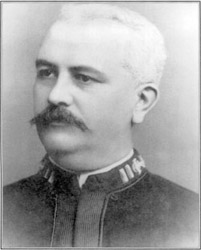
Lieutenant Theodorus B.M. Mason (The Intelligence Expert). An early advocate for streamlining naval intelligence, Mason was instrumental in establishing ONI. He served as the navy’s first Chief Intelligence Officer. (Photo Courtesy Wikimedia Commons)
Mason’s advocacy of an intelligence mission for the Naval Institute probably came as no surprise to his closest colleagues. By the time he aired his proposal in 1879, Mason’s involvement with naval intelligence had spanned a decade. He first experienced intelligence work while assigned to USS Franklin. Franklin was the flagship of the U.S. European Squadron when Ensign Mason reported on board in October 1869, little more than a year after his Naval Academy graduation. At the time, then-Captain Christopher R.P. Rodgers commanded Franklin—a fortuitous circumstance for the bright young ensign.
Rodgers—the future Pacific Squadron commander—was already an influential officer in 1869, highly regarded by contemporaries for his probing intellect and commanding yet personable leadership style. A man of vision, Rodgers would play a leading role in founding the Naval Institute, which he directed for much of its first decade with “great skill and devotion.” Rodgers anticipated a future navy composed of complex, modern warships, “with their new engines of destruction, their complicated machinery, and their novelties of structure,” and led by highly-educated professionals. Moreover, he demonstrated an uncommon ability to advance this vision. Rodgers seemed able to sense the possibilities inherent in most situations, no matter the circumstances. Seeking out avenues within the scope of his authority through which he could effect change, Rodgers quietly instituted appropriate reforms and innovations. With an eye to continuous improvement, Rodgers also actively mentored junior officers whom he believed showed promise as leaders for his future navy.
On the European Station in 1870, Rodgers found another opportunity to exercise his formula for change. During the closing months of that year he organized a select handful of Franklin’s junior officers into an informal intelligence cell. Theodorus Mason numbered among this group, as did Captain Rodgers’s son, Raymond Perry Rodgers. Mason and Raymond Rodgers were close friends and naval academy classmates; both ranked as masters in June, 1870 (equivalent to today’s lieutenant, junior grade), and both would later command the Office of Naval Intelligence.
A directive from Secretary of the Navy George M. Robeson prompted Captain Rodgers’s action. In November the secretary tasked Franklin’s commanding officer to gather information on fast-moving naval developments in Europe, where war raged between France and Prussia. The secretary’s list of topics was wide-ranging. “Take every opportunity to procure information,” Robeson directed, “in the relations of the enlistment of seamen; equipment of vessels and their methods of discipline, the management and system of conducting Navy yards…the newest plans of iron clad vessels and other professional subjects.” No doubt excited to garner information which might foster his navy of the future, Rodgers embraced the secretary’s tasking with enthusiasm. He soon set Mason and his fellow junior officers to work.
Curious, energetic, and multi-lingual, Mason found himself a natural fit for the business of intelligence. Even after completing his tour of duty in Franklin, Mason volunteered to continue gathering naval information in Europe on his own time and at his own expense. The Navy Department granted Mason leave upon his detachment from the ship in June 1871, whereupon he set out on a personal mission to visit European naval facilities.
Mason returned home from Europe five months later troubled by his overseas experience. The sojourn abroad had “opened his eyes to our deplorable backwardness in naval construction and armaments and our almost total lack of information about them,” an acquaintance later attested. However, Mason also sensed an opportunity to address both the navy’s material decline and the dearth of information on recent naval developments. In the arena of naval competition, “we cannot even put up an anty [sic],” Mason suggested, but “by not playing we may save money in the end and at the same time learn the game.” U.S. naval officers could learn much, Mason believed, by collecting pertinent intelligence and discussing their findings at the recently-established Naval Institute and other professional forums.
Mason made his recommendations just as the tempo of naval progress abroad sharpened the navy’s appetite for technical knowledge. The brief war scare with Spain in 1873 and a series of conflicts in Europe, South America, and the Middle East piqued American interest in the efficacy of modern naval hardware and other maritime matters. Some civilian administrators shared this enthusiasm, as demonstrated by Secretary George M. Robeson’s 1870 intelligence-gathering assignment to C.R.P. Rodgers in Franklin. Furthermore, Rodger’s Franklin cell was not alone in its efforts to keep up with world naval developments. Between 1866 and 1882, a continuous stream of discrete U.S. Navy intelligence missions fanned out across Europe and other continents. These missions employed some of the navy’s most progressive officers: Stephen B. Luce, Edward Simpson, Caspar Goodrich, French E. Chadwick, Francis M. Ramsay, and James R. Soley, among others.
In 1867 the navy sent Chief Engineer J.W. King to Europe to gather information on shipyards in France and England. King returned to Europe in 1869 to study steam engines, then twice again during the 1870s to learn about naval equipment and ship design. King published a comprehensive report of his findings in 1877; the first edition (nearly three thousand copies) quickly sold out. In the meantime, Theodore Mason obtained leave to travel in Europe again in 1878-79 for yet another personal intelligence-gathering mission. Mason’s reports back to the Navy Department advanced his growing reputation as an intelligence expert. “He was a qualified naval observer,” writes ONI historian Packard, who “knew what information was available, and knew how to get it.”
Unfortunately, bureaucratic jealousies often curtailed the usefulness of information submitted to Washington from agents in the field. By the 1870s, a wealth of valuable intelligence already resided within the Navy Department’s technical bureaus: Ordnance, Steam Engineering, Construction and Repair, and Navigation. Each organization actively gathered and archived relevant technical information from sources at home and abroad—individual agents received direction from the cognizant bureau chief, whether acting directly or through the secretary of the navy. “The chiefs of the different bureaus had been in the habit of obtaining information abroad for particular bureaus,” a former bureau chief later recalled, “where it was held as confidential, and no one knew what information there was…scattered about in the various offices.” Thus a self-serving reluctance to share information with other agencies—even those within the navy—led to project delays and wasteful duplication of effort. Such widespread bureaucratic compartmentalization frustrated many officers. One discouraged commentator aired his dissatisfaction in the New York Times, declaring: “officers gather information, conceive ideas…devise improved plans…and make valuable suggestions.” Yet once received by the responsible bureau, too often this earnest correspondence disappeared “among the papers that are to be considered in a future that never arrives.” , “A Naval Suggestion,” The New York Times, December 19, 1881, 3.] Such complaints helped to catalyze major changes in how the navy managed and used intelligence.
Other developments also helped to foster change. In 1879, the War of the Pacific erupted between Chile and an opposing alliance formed by Bolivia and Peru. Geography assured an important maritime dimension to the conflict, with ocean communications providing the best means for moving forces across the region’s arid, broken terrain and long, exposed coastlines. The strategic and technological implications of the war sparked a demand in the United States and elsewhere for military information gleaned first-hand from the theater of operations. Such prospects no doubt pleased Theodore Mason when he reported for duty with the U.S. Pacific Squadron, patrolling the west coast of South America. Mason’s arrival coincided with outbreak of hostilities between Chile and the Alliance.
Mason’s old mentor C.R.P. Rodgers commanded the Pacific Squadron. Mindful of the need for timely information on war developments, Rodgers stationed his ships along South America’s southwest littoral to monitor belligerent activities closely. Interest in the conflict was keen among U.S. Navy professionals and technical experts riveted by the prospect of modern, armored warships battling each other on the high seas—a first in world history. Chile and Peru each had procured such vessels from European shipyards during the previous decade. Although the South American ironclads were slightly older in design, they were nonetheless more advanced than any vessel in the U.S. fleet. The opposing ironclads clashed in several sharp actions, most notably the Punta Angamos battle of October 1879, which ended so ignobly for the Peruvian monitor Huáscar.
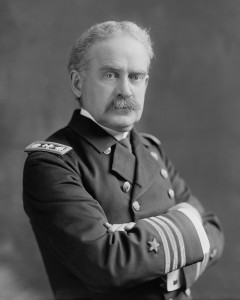
Charles C. Rogers (The Strategic Planner). As a young officer, Lieutenant (junior grade) Rogers developed contingency plans in 1887 for a potential conflict with British Canada. An Anglo-American squabble over access to Atlantic fishing grounds prompted Rogers’s planning effort. (Photo courtesy NavSource)
In a reprise of his initiative in European waters a decade earlier, Rodgers formed an intelligence cell composed of officers from his squadron. As in 1870, the admiral assigned Mason to the new organization. Among Mason’s experiences during his Pacific Squadron tour of 1879-1881, the inspection of Huáscar was probably the most profound. The resilience of the battered ironclad impressed Mason and his fellow officers, who no doubt recognized the scant hope for their own wooden warships should they ever encounter such a foe. Rodgers shared this understanding, emphasizing in his reports to Secretary Thompson the strategic impact of wooden vessels menaced by sea-going ironclad cruisers. The admiral knew that a handful of South American ironclads posed no direct menace to the United States, but the implications of powerful European armored cruisers in Western Hemisphere waters concerned him. When Rodgers departed the Pacific station in September 1880, Mason remained behind for another year to continue chronicling South American developments. In time, his reports landed on the desk of Secretary of the Navy William H. Hunt.
The Establishment of ONI
Early in 1881, President-elect James A. Garfield welcomed William H. Hunt to his new cabinet as secretary of the navy. A native of Louisiana, Hunt was the sole cabinet officer to hail from a former Confederate state. Described by naval policy historian Robert G. Albion as “clear-headed, honest, tireless, and persuasive,” Hunt soon proved his mettle at the Navy Department as a capable administrator. Although he had neither nautical experience nor any meaningful military background, Hunt proved a quick study on all matters naval. He also had personal ties to the service: Hunt’s late wife belonged to a prominent naval family, and his eldest son was a U.S. Navy ensign.
Hunt benefited during his tenure as navy secretary from consultations with a team of talented and forward-thinking advisors, including most notably C.R.P. Rodgers, Commodore Montgomery Sicard, and Commodore John G. Walker. The new secretary quickly concluded that the navy’s present size and condition were woefully deficient: hardly measuring up to its peacetime commercial and diplomatic missions, much less as an effective fighting force. “The condition of the Navy imperatively demands the prompt and earnest attention of Congress,” he exclaimed in his first annual report. Chester Arthur (who acceded to the presidency following Garfield’s assassination) affirmed Hunt’s argument, declaring in December, 1881 that “surely nothing is more essential to the defense of the United States and of all our people than the efficiency of our Navy.”
Congress seemed to agree with Hunt and Arthur, as legislators from both major parties signaled willingness to launch a program of naval reconstruction. Interest in naval affairs had been stimulated by the congressional investigations of the preceding decade, leading to demands for naval reform. Recovery from the economic downturn of the 1870s and a corresponding revival in foreign trade added further encouragement.
At the Navy Department, Secretary Hunt provided energetic, visionary leadership that helped channel the new naval enthusiasms of Congress and the public. Just four months into his tenure Hunt took the first concrete step: he appointed a board of advisors to examine options for the navy’s technological revival. Fifteen officers composed the board, including a mix of line and staff representatives. John Rodgers, a seasoned flag officer with over five decades of service and a first cousin to C.R.P. Rodgers, chaired the group. Hunt directed the Rodgers Board to define the navy’s material requirements and advise him how best to the “pressing need of appropriate vessels.” After several months of study, the Rodgers board proposed an ambitious program to construct new steel cruisers and a variety of other ships.
With an ambitious new program for naval reconstruction in the offing, the demand for up-to-date technical information from abroad became critical. The full range of experience and knowledge required to design, build, and operate a modern fleet hardly existed within the United States during early 1880s. While the navy could tap domestic sources for useful information on recent advances in technology, organizational management, and education, the cutting edge of naval progress abided overseas, principally in Europe. Besides accurate intelligence on “the strength and resources of foreign navies,” American naval experts needed to study all aspects of naval progress abroad, including ship and armament specifications, war materiel, operations, personnel, administration, logistics, coast defense systems, and other subjects of interest.
With these challenges in mind, Hunt recognized an urgent need to streamline the Navy Department’s intelligence-gathering effort. “The necessity was apparent,” one eyewitness later noted, as the navy “had no system for gathering information nor any idea of how to preserve it.” Hunt’s naval advisors, including C.R.P. Rodgers, Stephen Luce, and the new Navigation Bureau chief John G. Walker helped to develop a suitable solution. Theodorus Mason also played a role. While some sources attribute the genesis of ONI principally to Mason’s vision, uncertainty persists regarding how much counsel Mason provided directly to Secretary Hunt prior to the office’s founding. Neither meeting notes nor correspondence between Hunt and Mason on the subject of establishing ONI have been discovered.
Hunt was certainly familiar with Mason’s intelligence expertise, having read the latter’s recent reports from South America. In addition, the secretary was probably aware of the proposal for an intelligence bureau which Mason had advocated in 1879. Finally, Mason was stationed at the Naval Academy during the months leading up to ONI’s establishment, conveniently close to Washington, D.C. should Hunt have desired to consult him personally. Regardless of Mason’s direct influence in bringing ONI to life, he certainly played a major role in establishing it as a vibrant institution.
Walker most likely played the central role in advancing the idea of a naval intelligence bureau. As Chief of the Bureau of Navigation, he had ready access to Secretary Hunt. In a 1902 letter to the navy’s chief of intelligence, Walker claimed that he pressed Hunt to establish the intelligence office. “The Secretary of the Navy went over the matter with me personally,” Walker recollected, “approved the idea, and directed me to draw the necessary order, which I did and was promptly signed.” Walker’s subsequent enthusiasm as ONI’s chief patron and protector attests to his sense of ownership for the new agency.
* * * * *
By the winter of 1882 Hunt decided the time had come to consolidate the navy’s intelligence activities within a single agency. His plans for naval reconstruction demanded a more sophisticated approach for managing information. Hunt, along with Walker and Mason, evidently envisioned the new agency as an information clearinghouse, staffed by technical experts, and accessible to all branches of the navy. “At the very time when the first cruisers were being designed,” one official later remarked of the secretary’s actions, “the Department took steps to supply its want of experience by the systematic acquisition of information as to naval progress abroad.” On March 23 Hunt officially established the Office of Naval Intelligence. “An ‘Office of Intelligence’ is hereby established in the Bureau of Navigation,” read his general order creating ONI, “for the purpose of collecting and recording such naval information as may be useful to the Department in time of war, as well as in peace.”
As events transpired, Hunt would make no more contributions to naval intelligence. Three weeks after Hunt issued the order to establish ONI, the newly-inaugurated Chester Arthur replaced him with William E. Chandler. Like Hunt, the new secretary was a lawyer by trade; unlike his predecessor, Chandler was well-acquainted with the backroom machinations of party politics. Chandler cut his political teeth as a state legislator in his native New Hampshire before moving on to the national scene. Aside from brief stints as naval solicitor and assistant treasury secretary, Chandler spent most of the previous two decades as a party strategist and campaign manager. Despite his background as a political operator (or perhaps because of it), Chandler proved to be as capable an administrator as Hunt, although rumors of an overly-cozy relationship with Philadelphia shipbuilder John Roach would taint his term.
Soon after taking office in April 1882, Chandler appointed Mason to organize and run ONI as the navy’s first chief intelligence officer. Within weeks of his arrival at navy headquarters two months later, Mason cobbled together a small staff of a half dozen officers pried from other departmental offices. Administratively, ONI formed part of the Bureau of Navigation, where its powerful chief Walker nurtured the fledgling agency through its earliest years.
The scion of a prominent family with roots in New England and the Midwest, Walker was a no-nonsense professional. Well-connected politically, he wielded tremendous influence within the Navy Department. “Unquestionably the ablest and most forceful man of his time in the navy,” recalled a prominent government contractor. Fellow officers and civilian officials anxiously avoided crossing Walker; they knew him as “a man of very strong character,” and “a bad one to oppose.” Yet Walker also displayed an openness of mind and passion for innovation that earned him contemporary acclaim as a “splendidly able and progressive man.”
Walker’s progressive credentials were stronger than many of his naval contemporaries. While on leaves of absence from the navy during 1872-73 and 1879-80, Walker worked as a senior executive first for the Burlington and Missouri Railroad and later for the Chicago, Burlington, & Quincy Railway. At the time, railroad management ranked among the most advanced professions in the nation, with robust national associations, specialized journals, educational prerequisites, and distinct career patterns. “By the 1880s American railroad managers had taken on the standard appurtenances of a profession,” notes distinguished business historian Alfred D. Chandler, “they saw themselves and were recognized by others as a new and distinct business class—the first professional business managers in America.” The professionalized nature of American railroading proved irresistible to Walker. Having “nothing to do in the Navy” during the nadir years of its postwar doldrums, he admitted to entering the industry “from a desire to acquaint myself with the methods of handling great railroad corporations.”
Walker spent more than three years working as a railroad executive, learning from within its complex organizational and bureaucratic culture. He applied managerial expertise gleaned from the railroads at the Bureau of Navigation, which Walker headed from 1881 to 1889. Walker obtained impressive results. Albion credits him with building up the bureau as an important center of influence within the Navy Department: “the real power of the Chief of Navigation seems to have begun with Rear Admiral John G. Walker…. Nephew of the influential James G. Grimes of the Senate naval Committee, he had good understanding of shore tactics.” A junior officer from the 1880s remembered Walker as “politically the most powerful man in the Service…one of the ablest administrators the Department ever had.” Walker’s rationale for establishing the Office of Naval Intelligence certainly bore the hallmarks of his railroad experience. Efficiency and centralized control framed his vision for the new office, rendering it a model of progressive management. “My recommendation to establish a single office to have charge of this work and cover the whole field was in the interest of good administration and economy,” he later recalled.
Under Walker’s astute mentorship, Mason began organizing the operations of the new intelligence office. He instituted a permanent naval attaché network, superseding the Navy Department’s exclusive reliance on irregular intelligence missions. At the same time, the ONI staff began the task of gathering and organizing the reams of information that already resided in various navy bureaus and agencies. With assistance from Secretary Chandler, Mason cleared away bureaucratic obstacles to obtain files scattered around the Navy Department. “The Bureau of Steam Engineering had some ordnance notes but refused to give them up, and it required an order from the Secretary to compel that bureau to turn them over,” an early ONI staffer recollected. A team of energetic junior officers dissected open-source publications and reports that might contain timely and relevant information. One project that devoured hundreds of man-hours literally ripped apart recent volumes by naval authors to parse and catalog their contents. The ONI staff subjected Chief Engineer King’s 1877 book on European navies to this meticulous process, along with a larger work on world navies by Lieutenant Edward W. Very. Working with the new Navy Department Library, Mason soon acquired a steady flow of foreign maritime publications from which the ONI staff extracted, translated, and cataloged pertinent information. Mason adapted an information management system from the State Department, creating a comprehensive index which facilitated ready access to ONI’s ever-growing accumulation of information.
As Mason and Walker busily organized the Office of Naval Intelligence, Congress debated appropriations proposals intended to arrest the nation’s naval decline. Diminishing opportunities for new settlement on the American frontier and the end of Southern Reconstruction helped lay the political foundations for naval reconstruction. These developments helped to revive public interest in foreign affairs, a shift reinforced by a growing sense of America’s potential in the wider world. Furthermore, by the early 1880s the federal revenue account burgeoned from a consistent post-war policy of high tariffs. The dynamics of party politics produced pressures to spend down the surplus funds, and naval reconstruction appealed to many lawmakers as a suitable solution. As a result, Congress finally approved construction of a small squadron of modern warships in 1883, followed by additional shipbuilding authorizations each year from 1885. With the launching of new warship-construction projects, the demand for relevant information intensified—the institutional longevity of Mason’s new organization seemed assured.
Mason amplified ONI’s value to the navy’s technical bureaus by satisfying their growing appetite for information on developments in science, technology, and engineering. For specialists within the organizations responsible for designing and building the new navy, ONI provided myriad details on foreign ships, systems, and practices. By keeping navy constructors well-apprised “of the progress of naval science in Europe,” ONI enabled them “to study the practical application of the problem as they had never studied it before.” For the enrichment of all naval professionals, the office produced a general information series which contained reports on myriad topics intended “to assist officers in their studies.” One such study on new unarmored cruiser designs employed information provided by ONI to bolster an argument for armoring U.S. warships. ONI also published reports from various scientific and exploratory expeditions (which the navy continued to sponsor throughout the nineteenth century and indeed down to the present day). Numerous reports and articles from ONI staff members appeared in official ONI publications as well as within the pages of the Naval Institute Proceedings and other journals. These products also served to inform and educate a broader audience of citizens interested in naval affairs. Speaking to an audience at the American Geographical Society in 1884, the noted editor and political commentator Albert G. Browne, Jr. referenced Mason’s “excellent, but strictly official monograph” on the recent War of the Pacific (ONI War Series No. 2) to help portray Chile as a rising challenge to U.S. hemispheric aspirations. Three years later, the officer in charge of the navy’s Branch Hydrographic Office at the New York Maritime Exchange reported a strong local demand for ONI publications: “the reports of the Office of Naval Intelligence are eagerly sought.”
Walker soon reported with confidence that ONI was thriving as a center for technical intelligence. Its valuable work “compiling and arranging information collected from all sources, and supplying this information…to the several bureaus of the Navy Department, and to the naval committees of Congress,” he proudly informed the new navy secretary, Benjamin F. Tracy, in 1889, “is now fully recognized.” Evidently impressed, Tracy told the president and Congress that ONI’s efforts “have been of incalculable assistance in the work of reconstruction.” Mason, who moved on to other duties in 1885, was no doubt pleased by the accolades his cherished agency had garnered as the navy’s primary provider of timely and useful technological information. Yet all along Mason had envisioned ONI as more than a clearinghouse for intelligence relating to mechanism and technology. From the outset he also quietly shaped the office as a center for synthesizing, analyzing, and disseminating information with strategy in mind.
ONI’s Strategical Mission
ONI’s founders replaced the navy’s traditional, jumbled approach to intelligence work with a progressive framework. Systemization, specialized expertise, heightened efficiency, function-based organization, centralized institutions, and scientific method permeated the new agency. Hunt’s original 1882 order to establish the office reflected a rational attempt to recast previously inchoate intelligence functions under the aegis of a central authority. Blending his own vision with the ideas of Hunt and Walker, Mason designed internal processes and procedures with efficiency in mind. ONI’s information cataloging system exemplified this approach. Mason’s methods at ONI resembled the progressive bureaus of research that would emerge in the United States after 1900. Just as the municipal research bureaus “provided endless data…and the skill for drafting some of the more complex ordinance,” ONI collected, synthesized, and published large amounts of information. In time, officers at ONI would also draft complex strategic plans.
Mason staffed the new office with a select cadre of intelligence experts. Secretary Chandler encapsulated the intelligence chief’s ideas in a directive issued on July 25, 1882, just weeks after Mason reported for duty. The secretary mandated “only such officers as have shown an aptitude for intelligence staff work or who by their intelligence and knowledge of foreign languages and drawing give promise of such aptitude,” should be assigned to ONI. Many of the young ONI staffers Mason and his successor recruited were adept in both technical and strategic endeavors: Washington I. Chambers, John B. Bernadou, Charles C. Rodgers, and Carlos G. Calkins numbered among the most notable in this regard.
Mason’s vision thus exceeded the explicit instructions of his superiors that ONI merely “collect and record” pertinent naval intelligence. He believed that ONI should fulfill a strategical mission in addition to its technical responsibilities. Mason had participated too fully in the strategical awakening of the 1870s not to realize the potential that his new command offered for the practice of strategy. Civilian leaders apparently embraced Mason’s wider views. The scope of information assigned to ONI’s purview by Secretary Chandler went beyond simply meeting technological requirements. In the July 25 directive (likely ghost-written by Mason), Chandler opened the door to strategy-related activities by instructing the office to gather and synthesize a wide scope of information: “the cruising fleets of foreign powers,” distribution networks for “coal and supplies,” capabilities for “transporting troops and material,” “armament of foreign ports,” “facilities on foreign coasts…for landing men and supplies,” as well as “actual capabilities of foreign merchant steamers and the true routes followed by regular steamship lines.”
A prolific output of studies and articles penned by ONI staff officers affords ample evidence of a strategical agenda. It clearly demonstrates that other officers shared Mason’s strategic interest and vision. In 1883 the first thematic treatments appeared on topics of strategic interest. These took the form of three campaign case studies covering recent events in Egypt, Tunisia, and South America. Together the trio comprised the War Series. At the same time, ONI published a General Information Series. In addition to technical subjects, editions of the General Information Series that appeared between 1883 and 1889 featured articles covering strategy and grand strategy. These included treatments on naval logistics, forward fleet operations, power projection, recent naval campaigns, the uses of merchant auxiliary forces, the management and use of naval reserves, and foreign mobilization plans and philosophies. By 1890, strategic insight reached an advanced state at ONI. In 1888, one ONI staffer exhorted navy professionals to embrace “grand strategic principles of national attack and defense.”
In addition to the official publications, ONI staff officers published articles of strategic interest in the Proceedings and other journals. An especially significant essay appeared in 1883, under the title “Naval Intelligence.” Ensign Charles C. Rogers (assigned to ONI 1882-1883 and 1889-1892) authored the piece, which amounted to a strategic manifesto for naval reconstruction. Deep strategic insight framed Rogers’s discussion, which touched upon matters of force design; strategic movement; schemes of national defense and offense; campaign and war studies; strategic communications; global topography and hydrography (from perspectives of both defense and attack); naval logistics; the relationship between war and commerce; and the mobilization (and interdiction) of strategic resources, including fuel, food, and manpower. Contemporary readers no doubt wondered how ONI might keep track of such an exhaustive body of information!
Following his tour at ONI, Rogers taught in Newport, Rhode Island, at the newly-established Naval War College. His syllabus for the 1888 session signals a growing appreciation for the close relationship between strategy and intelligence. Rogers interweaved both themes in the classroom, where he stressed to his students that “the essence of intelligence work is preparation for war.” His lectures covered a variety of relevant topics, including naval logistics for fleets “acting at a distance”; establishment of supply depot networks; the importance of strategic intelligence; “the strategic value of trade routes, to include their defense and attack in war”; and reconnaissance. Rogers also presented to his students a strategic study of the Great Lakes frontier.
* * * * *
Theodorus Mason’s tour as the head of naval intelligence ended in April 1885, when he detached for new duties in Central America. His replacement was Lieutenant Raymond P. Rodgers, Mason’s good friend and fellow veteran of the Franklin intelligence cell fifteen years earlier. Rodgers’s arrival as chief of intelligence coincided with a singular but little noted moment in U.S. naval history.
Just two days before Rodgers reported for duty, on March 31, new Navy Secretary William C. Whitney issued instructions that notably expanded the strategic dimension of ONI’s mission. In his directive, Whitney ordered the intelligence office to “collect and classify information upon all subjects connected with war, or which can have a bearing upon naval action, and to prepare detailed plans of campaigns covering all contingencies of active naval operations.” Whitney’s order marks the formal advent of peacetime contingency planning by the U.S. Navy.
ONI’s strategic planning efforts between 1885 and 1889 seemed tentative and amateurish by later standards. At the outset, the navy possessed neither experienced planners nor models from which to design appropriate procedures. Nevertheless, Rodgers and his staff made an honest effort, often personally overseen by the ubiquitous Walker. As a start, the chief intelligence officer established a desk to address “Offensive and Defensive” matters—a title that suggests strategic synthesis and planning. The ONI register lists Lieutenant William H. Beehler as the first officer to fill this position. Beehler’s responsibilities included “Depots and Bases, Dockyards, Fortifications, and Operations”—important activities for developing strategic plans. Rodgers also charged Beehler with keeping tabs on developments within the U.S. Army—an early acknowledgment of the need for joint coordination.
Preparation of “War Maps” represented another important ONI function. The ONI staff compiled these large charts anticipating future operations. Intended to show planners and commanders “all the information necessary to use…the localities they embrace for offensive and defensive operations,” the war maps possibly represent ONI’s earliest attempts at strategic planning, predating the first known campaign plans by several years. Washington I. Chambers apparently established the war mapping function during 1883-84, with Beehler taking over in 1884-1885.
It appears that Whitney’s first planning assignment for ONI involved potential operations in Panama, where French entrepreneur Ferdinand de Lesseps was attempting to construct a canal. A rebellion exploded on the isthmus in March 1885—just days after the Cleveland administration entered office. When rebels interdicted the trans-isthmian railroad (which the United States was bound by treaty to protect), burned a U.S. consular office, and otherwise menaced American lives and property, the new president ordered a naval expeditionary force ashore in early April to restore transit and prevent further depredations. A simultaneous intervention by Chilean forces aggravated the situation. Whitney quickly withdrew the U.S. sailors and marines after Columbian troops arrived to restore order.
Events in Panama quickly overtook whatever contingency planning ONI initiated—the Columbian forces assumed control by the end of April, and the last U.S. troops departed on May 25. Whether or not planning advanced beyond a preliminary stage, ONI sponsored several strategic reconnaissance missions to Panama during 1885. Walker directed one on-scene commander to perform a confidential survey of islands off Panama’s Pacific coast for the purpose of ascertaining “how completely they would control the Bay of Panama if we were to occupy them with a permanent force.” On other missions, field intelligence officers in Panama performed thorough inspections of the French canal project under construction, and prepared detailed reports. Back at ONI headquarters, Ensign George H. Stafford began compiling a war map of the Isthmus.
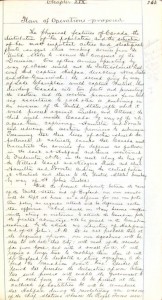
Excerpt from Rogers’s 1887 strategic design. Rogers envisioned a joint sea-land campaign to seize Canada’s strategic heartland. Lieutenant Seaton Schroeder, ONI’s desk officer for campaigns and strategy, scribbled a margin note on this page (upper right corner). Schroeder’s comment reads: “Very difficult no lines of Com. by water or rail. SS” (Photo Courtesy RG8, Naval Historical Collection, Naval War College; photographed by the author)
A dispute with Britain over fishing rights in Canadian waters prompted another strategic planning initiative in 1886. Walker and Rodgers sought first-hand information on Canadian defenses to support the planning effort. They and ONI staffer Seaton Schroeder traveled to Canada during the summer of 1887, evidently on a self-appointed mission to gather intelligence “that would be needed both for the protection of our own interests and to injure the enemy in case of war with England.” The ONI mission coincided with another reconnaissance by Charles C. Rogers, then serving as intelligence officer in USS Galena. On July 1, 1887, Rear Admiral Stephen Luce, commander of the navy’s North Atlantic Squadron, directed Rogers to survey ports in eastern Canada “as you may find to be of marked strategic or commercial importance.” Rogers likely carried out his assignment with Walker’s concurrence, visiting Halifax, Toronto, Kingston, and other locations. After completing his survey, Rogers spent several months at ONI assembling a series of voluminous classified reports from the materials he gathered in Canada. One of his compilations, “Intelligence Report on War Resources in Canada,” subsequently provided reference material for Naval War College lectures.
A new fisheries treaty in 1889 eased tensions between the United States and Britain. Nevertheless, the episodes involving Panama and Canada helped to spark an unprecedented burst of strategic development at the Office of Naval Intelligence. Gathering and reporting intelligence characterized only the most basic aspects of ONI’s activities. More significant was the degree of strategic synthesis performed at the office, largely in the form of contingency plans, war maps, and strategic studies.
Most notable was the appearance of actual strategic plans. The full extent of these early planning efforts is not easy to assess. “Nor was it clear how far war planning went against Canada or its protector Great Britain,” notes ONI historian Jeffrey M. Dorwart. Dorwart and other scholars found only scant evidence of ONI’s early strategic planning. However, nestled within the thick volume of Canadian war resource information prepared by Rogers in 1887 are sections entitled “Analysis of Defenses” and “Plan of Operations.” We do not know whether Rogers prepared these plans by direction of senior authority or on his own volition, or whether top officials approved the final products. However, it is clear that Rogers’s materials were not unknown to senior navy leaders. The ONI staff officer responsible for campaigns and strategy annotated and initialed Rogers’s plans. Naval War College president Mahan was also familiar with the documents, and other officers—including ONI chief R.P. Rodgers—almost certainly reviewed them. Elements of a contingency plan for war with Great Britain drafted in 1890 by Mahan resemble those found in Roger’s 1887 original.
The war plans produced by Rogers were rudimentary drafts—each a handwritten outline of strategic designs—rather than detailed campaign plans. Nevertheless they represent an important first step for a navy without significant experience planning strategic operations well in advance of actual need. Most interesting among Rogers’s proposals was a comprehensive campaign plan for the conquest of Canada.
Rogers proposed a scheme of “divide and conquer” as the best path to military success in Canada. He suggested cutting the nation in two by quickly securing control of its strategic locus: a geographic triangle demarcated by Montreal, Ottawa, and Kingston, Ontario. Montreal, he predicted, would pose the toughest challenge. To effect its capture, Rogers advised gathering a large army at Albany, “the critical depot of the war,” then driving north along the classic Hudson River-Lake Champlain-Richelieu River axis. American forces would leverage the extensive railroad and waterway networks of the U.S. Northeast to achieve speedy movement, concentration, and resupply.
Rogers recommended securing the strategic flanks as a precursor to the crucial drive on Montreal. To accomplish this preliminary goal, he believed that the U.S. Army with limited naval support must quickly isolate Halifax and seize the key Lake Ontario ports of Kingston, Toronto, and Hamilton. With these early operations the Americans would win the strategic initiative. At the same time, the bulk of the U.S. fleet would deploy to defend the American coastline against the enemy’s maritime incursions.
When ready, the Albany force would attack Montreal. Bolstered by gunboats and torpedo craft from the navy, the army would chop through Canada’s strategic heart like a cleaver. By moving perpendicular to the vital Saint Lawrence lifeline, Rogers argued the Americans could avoid the strategic blunder of rolling up the British-Canadian defense “along the lines of communication toward the point of support and base of supply.” Rather than allowing enemy resistance to stiffen in retreat, Rogers’s bifurcation strategy would instead enfeeble it—at least in theory. With Canada neatly divided, the American conquerors could muster a strong defense against counterattack from the east, while extending U.S. control over the rich Great Lakes basin to the west.
While Rogers devised his campaign plans, other officers produced materials to support planning efforts. Following Beehler and Chambers, Seaton Schroeder and Charles C. Rogers supervised war maps between 1886-1889. Schroeder, Rogers, and Beehler also researched “Strategic Positions” during this period. Lieutenant Wainwright Kellogg charted the location of inter-oceanic telegraph cables—an essential resource should necessity arise to interrupt Britain’s communications with Canada. Between 1887-1891, Ensign John B. Bernadou prepared a series of classified maps displaying in graphical form important strategic information on Britain’s seaborne food supply and maritime shipping patterns. One map series produced by Bernadou displayed a month-by-month analysis of British food import flows. Another analyzed seasonal variations in Britain’s global shipping patterns, while a third series presented the same information for American shipping. U.S. strategic planners would find such information useful in designing an interdiction campaign against Britain’s vital maritime lifelines—and for making plans to defend America’s own sea lines of communication.
An abundance of strategic research and analysis emanated from ONI’s early planning efforts. In addition to the reports on Panama and Canada, two other studies produced by ONI staff members stand out as substantial resources for strategic preparation. The first, entitled, A Study of Exposed Points on our Frontier, was originally drafted for the 1885 Fortification Board chaired by Secretary of War William C. Endicott. However, the study also constituted a detailed reference guide for strategic planners. William H. Beehler, ONI’s desk officer for offensive and defensive operations, authored the report. Beehler cataloged hundreds of strategic sites along the coasts and borders of the United States, analyzing each for military strengths and vulnerabilities. He also assessed the railroad infrastructure of Canada and the United States. He highlighted areas where the former posed particular strategic danger and offered suggestions on how to address American vulnerabilities. Beehler’s contributions helped to shape upgrades to the nation’s strategic fortification system. In addition, Rogers possibly consulted Beehler’s work while preparing his 1887 plan of operations for Canada.
A second, unpublished study was perhaps more influential than Beehler’s work. ONI staff member Lieutenant Carlos G. Calkins researched and composed “The Coast-Line of the United States Considered with Reference to Maritime Attack and Defense,” and delivered it as a Naval War College lecture series. Despite the title’s insinuations, Calkins devoted only one short section of his study to naval campaigning specifically along the U.S. coastline; the rest of his topics applied strategic concepts and principles to various dimensions of naval warfare in general, ranging from the “Objects of Aggressive Maritime Warfare” to “Strategical Geography Affecting Maritime Attack” to “Distribution of Forces for a Naval Campaign” and “Functional Employment of the Navy In Coast Defense.”
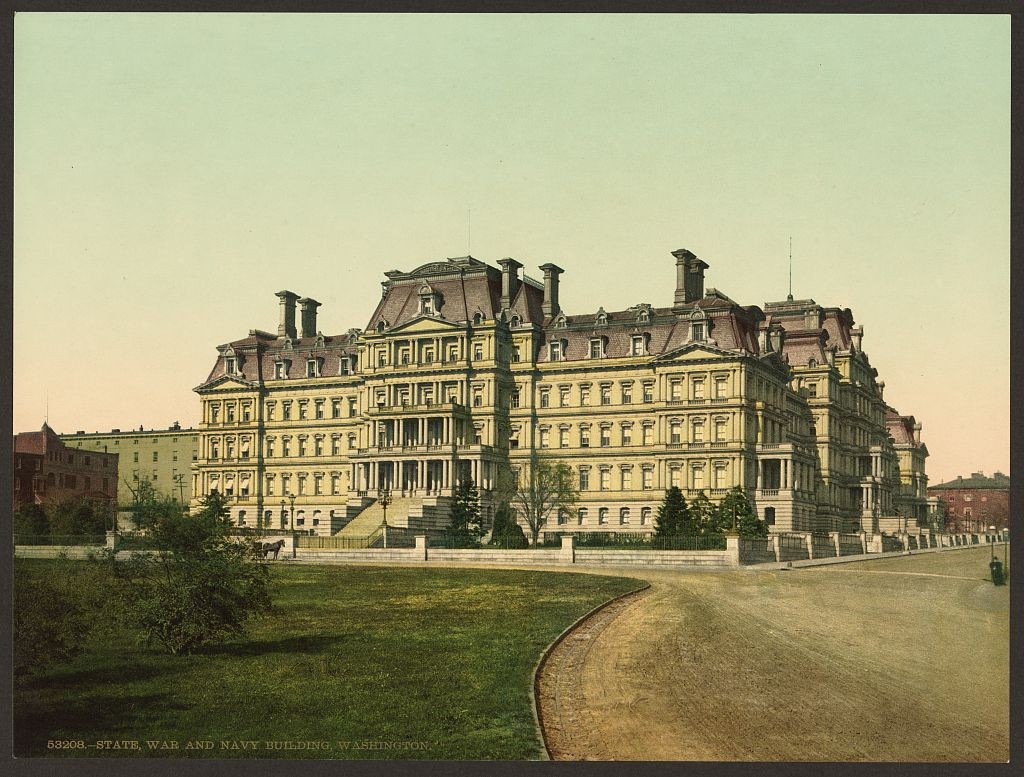
The newly-constructed State, War, and Navy Building (now the Eisenhower Executive Office Building) housed ONI during the 1880s. (Photo Courtesy LOC)
In effect, Calkins’s treatise was a primer for strategic planning. Calkins first taught the coast defense topic at the war college in 1887, at the end of his ONI tour. Calkins and others continued to present his lecture material into the 1890s, when it almost certainly influenced the tentative planning efforts for a potential war with Spain. Naval War College President Henry C. Taylor, an instrumental figure in the planning for war with Spain, was intimately familiar with Calkins’s ideas. Taylor singled out Calkins’s work for special mention in 1894, praising the younger officer for his “very rare abilities” as a strategist, and recommending him “as an officer of great use to the Navy Department in time of war.”
Conclusions
That naval intelligence staff officers produced no finished designs for wartime operations during this period is less important than the paradigm shift their efforts represent. In a sharp departure from past practice (influenced by international frictions in Panama and Canadian waters), civil authorities directed navy strategists to prepare contingency plans during peacetime. No longer was strategy merely an activity of wartime improvisation, nor did it remain an endeavor to which naval officers devoted little serious thought and energy when the nation was at peace. Having fashioned itself into a locus for strategic studies, ONI became the navy’s first center for regular, systematic strategic planning. Its early strategy-making accomplishments set the stage for more productive efforts in the decade that followed, when ONI staffers, working with the newly-established Naval War College, would play a leading role in developing the strategic blueprint for potential naval operations against Spain. Perhaps more significantly, officers exposed to early contingency planning at ONI began to value strategic skills and encourage their comrades to develop strategic expertise. In other words, they began to identify themselves as “strategists.”
The institutional development of strategy and intelligence advanced significantly within the U.S. Navy between 1869 and 1889. Both began the period as sporadic, inchoate functions, improvised by amateurish practitioners acting largely without method, structure, or theory. Two decades later both intelligence and strategy had become systematized processes, practiced regularly by an increasingly capable cadre of experts, during peacetime as well as in war. After 1882, both intelligence and strategy found an institutional home in the Office of Naval Intelligence.
The institutional development of strategy and intelligence advanced significantly within the U.S. Navy between 1869 and 1889. Both began the period as sporadic, inchoate functions, improvised by amateurish practitioners acting largely without method, structure, or theory. Two decades later both intelligence and strategy had become systematized processes, practiced regularly by an increasingly capable cadre of experts, during peacetime as well as in war. After 1882, both intelligence and strategy found an institutional home in the Office of Naval Intelligence.
The practices of naval intelligence and naval strategy arrived at the same place via separate, albeit often intertwining, paths. At the outset, naval officers and civilian policy-makers seemed not to recognize the close relationship between strategy and intelligence; their actions treated the two disciplines as discrete functions. Traditionally, American naval intelligence work responded to demands for technical, scientific, commercial, and professional information, with no apparent connection to strategic purpose. At the same time, the navy’s approach to strategy followed a tradition of improvisation during war and disregard during peacetime.
During the latter half of the nineteenth century, several developments acted to transform naval attitudes toward strategy and intelligence. First, Civil War experience opened the eyes (and minds) of some naval officers to new possibilities regarding the theory and practice of both disciplines. Second, naval intellectuals grasped that traditional approaches to strategy and intelligence would soon become overwhelmed as the ongoing revolution in industrial technology heaped complexity and complication upon a world already convulsed by modernization. Third, apprehensions over shifting international geopolitics added urgency to calls for change. Finally, the associations and journals associated with the navy’s own professionalizing project encouraged new dialogue and ideas within the naval officer corps.
Propelled by these transformational forces, the U.S. Navy experienced a strategical awakening during the 1870s and 1880s. The navy’s new strategic consciousness marked a sharp departure from past habits that neglected strategic education, discourse, and practice. At the same time, the need to accumulate and organize a fast-growing body of essential information prompted navy officials to establish the Office of Naval Intelligence. By incorporating progressive managerial concepts such as the use of experts, functional organization, and scientific methodology, ONI created a new paradigm for the navy’s practice of intelligence. These same concepts opened the door for a flowering of strategic studies and planning.
Once established, ONI became the institutional home for practicing naval strategy, along with conducting intelligence activities. The responsiveness of both disciplines to progressive practices help explain this synthesis, but two other factors also contributed. First, the leading figures behind the founding and early orchestration of ONI were already strategically-minded; many, like Theodorus Mason and Washington Chambers extended their pioneering work from the strategical awakening. These men readily grasped the relationship between strategy and intelligence, a relationship conveyed concisely by the remark from Charles Rogers’s war college syllabus that “the essence of intelligence work is preparation for war.” Second, ONI housed under a single roof a staff of young officers who eagerly absorbed the ideas of mentors like Mason, Walker, and Raymond Rodgers. Their daily work soon reflected the natural synergy of strategy with intelligence, which they spread to a broader naval and public audience through official publications and journal articles.
By 1889, a new paradigm for the practice of strategy emerged within the U.S. Navy, as reflected by the proliferation of strategic studies and strategic planning at ONI. Strategy-making, like the navy’s practice of intelligence, became increasingly coherent, methodical, pro-active, and expert-driven. It was also becoming a permanent endeavor, with navy planners continuously at work preparing for war contingencies during peacetime. Strategic practice would continue to mature into the following decade, when it would merge with a fresh set of ideas about strategy ideas emanating from the Naval War College—a confluence that would transform American naval policy and professional identity.
(Return to December 2015 Table of Contents)
Footnotes

